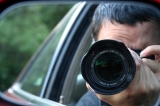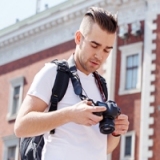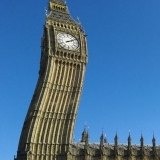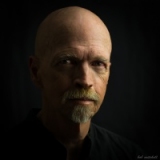- Forum
- General Discussion | Introductions | Off Topic Forum
- Photography General Discussion
- Would it still be considered a photograph...
Would it still be considered a photograph...
-

- Uplander
- The Lounger
-
- Nikon D800
- Followers: 216
- Posts: 1324
-
Points:
12628
-

- Kayce
- Lone Wolf
-
- Canon 5D Mark III
- Followers: 50
- Posts: 107
-
Points:
605
Post #426493
Kayce wrote: Image/photo? Same thing. It's the purist who might have something to say.
No that is not the case as Sharon pointed out. A drawing is an image, so is it a photograph as well?
One is merely an illustration, the other is a record. If you remove things from a photograph then it no longer is just a recording of a subject. Would you be fine with photojournalists subtracting, or adding things into their images to make the story pop?
I am not saying in any way that there is anything wrong with doing this, as I have done it many times to rid my images of unavoidable clutter. But to think that seeing one way as being an actual photographic record, and the other not being so as being a purist, is not correct either.
The only true and real adjustments acceptable for a pure shot is to adjust flaws in the capture itself. Such as brightness, tonality, cropping, and sharpness. When you start to manipulated parts of the scene in the image, it becomes artistic illustration. But in truth we do manipulate the reality of the scene just by the way we shoot it as well, when we choose to not shoot it fully in its relation to the world surrounding it. Our images/photographs are merely an example of how we see a given part of the world around us at a moment, nothing more, nothing less.
Post #426505
I agree, if we're talking about shooting for our own amusement, or to record a particular moment in space and time for posterity. But if we shoot to share our images with others, whether for commercial purposes, for competition, or for artistic expression, then we add the dynamic of performance into the mix. That dynamic is worth exploring, because we are then not simply sharing how we see the world around us in that moment, but shaping it to have a particular effect on others.
-

- effron
- Newbie
- Followers: 1623
-
Points:
129640
Post #426508
To the OP, call it what you want...geesh....
Why so serious?
-

- Alan Nunez
- Snapobsessed
-
- Nikon D3 & D2x
- Followers: 88
- Posts: 391
-
Points:
0
Post #426518
-
 Topic Author
Topic Author
- Harper Coswell
- Has the Hang of it
-
- Canon 60D
- Followers: 46
- Posts: 91
-
Points:
894
Post #426549
Post #426624
Harper Coswell wrote: You all gave me much to think about. Thank you!
A few other things to think about, just for fun...
When we experience a moment in space and time, we can't divorce what we see from the data we're acquiring with our other senses: the sound of the surf, the wind rustling the leaves, the cry of birds, the sun beating down, other people around us, even the feel of the camera as we take the shot. Then there are our emotions, and our own projections on the scene. There's possibly even a quantum physics aspect to it, in that our very observations of a subject may change the reality of it.
Fun stuff aside, the first edit of the image is mental: We experience something on multiple levels that moves us to capture the moment, but we aren't really capturing the "moment," are we? Even if we strip out all of the other influences present, and only focus on our sense of sight, we're "arranging" the scene, even if we simply move this way or that to avoid a garbage can. If the garbage can is a prominent object at the scene, then by avoiding it in composing the shot, we've already edited the photo before we push the shutter release. But even without such considerations, the truth is that every time we take a shot, we're reducing the 3-dimensional image to two dimensions. We're "dumbing it down," and it becomes something else entirely. It's now a poor simulation of the original. If it was awe-inspiring to see it in 3 dimensions, it's often disappointing to view it with one dimension removed from it. So, what do we do to communicate that awesomeness to someone who wasn't there?
Well, we can manipulate it with settings. The second edit involves the internal default camera settings, plus the settings we choose, the white balance, the ISO, the F-stop, etc. As an example, I've taken shots of the moon on nights in which the sky had no stars visible to the naked eye, and not even in live view at 300mm zoom, doubled. Later, looking at the shot in 100% view in PS, the screen is full of stars. The "moment", then, has had objects added to it, just because of the settings I used.
The third edit is working with the RAW image settings. I can enhance it, edit for clarity, change the white balance, slide the vibrance, saturation, bump up the exposure or bump up the blacks, and on and on - not to mention choosing to add HDR effects. I may end up with an awesome image when I'm done, but is it a faithful rendition of the original experience?
My question is a simple one, but I don't believe there is an obvious answer:
Is there an editing line that photographers are faced with in every shot, on one side of which is integrity and ethical treatment of the subject, and on the other side of which is dishonesty, deceit and manipulation?
Rob
-
 Topic Author
Topic Author
- Harper Coswell
- Has the Hang of it
-
- Canon 60D
- Followers: 46
- Posts: 91
-
Points:
894
Post #427050
Post #427094
Post #427129
Don't know if you're familiar with it, but National Geographic has a site that revolves around user-submitted photos. For several years, they would only accept "pure" photos, meaning minor cropping, a bit of dodging or burning, and resizing were OK, but nothing more. Now they accept HDR images, with some caveats. I think NatGeo's current requirements are pretty solid, and I try to follow them no matter where I upload my photos. Restraint is the better part of artistic effort, in my opinion.
Here are NatGeo's submission requirements :
ETHICS: National Geographic supports ethical photography that accurately represents cultures, ecosystems, and wildlife. We expect that the welfare of people, animals, and their environments take precedence over photography. In other words, don’t harm or manipulate the subject or its environment for the sake of creating an image.
CAPTION: We insist on truth in captioning and expect full disclosure in the story behind the photo. The description should be complete and accurate. Not only does this establish trust and lend greater credibility to your photo, but it also increases the engagement of the viewer.
BURNING AND DODGING: Brightening or darkening specific areas in an image is allowed but
should be kept to a minimum and not done to the point where it is obvious. Your goal in using digital darkroom techniques should only be to adjust the dynamic tonal range and color balance of an image so that it more closely resembles what you saw and communicates the mood of the scene.
CROPPING: Cropping is allowed, but composing the image in-camera is always ideal.
BLACK AND WHITE PHOTOGRAPHY: Converting your color photos to black and white is acceptable.
STITCHED PANORAMAS: These are allowed only if the segments were all made within the same time frame. Don't create panoramas with sections made at significantly different times. Do not change focal length while creating a stitched image. Do not stretch the meaning of panorama to include elements that weren't in the scene as you saw it. If your photo is a stitched image, please indicate so in the caption.
COMPOSITE OR HIGH DYNAMIC RANGE (HDR): These shots are allowed only if the combined parts are made at the same time. Don't submit final images where the foreground was shot at noon and the sky at sunset. If your photo is an HDR image, please indicate this in the caption.
FILTERS: We allow filters on photographs. We ask that you please include a description of how the style was achieved and which filter or technique was used. Use discretion, however, as overprocessing can often make the photo look cartoonish.
WATERMARKS: Your Shot always credits the author of a photo whenever and wherever it appears on the site, along with providing a link to the author's profile. Because of this, there's no need to watermark your photo. A small and subtle watermark is allowed but not encouraged—we want to see your photograph without any distractions.
NAPPROPRIATE CONTENT: Any content that violates the Your Shot Terms of Service will be removed from the site. This includes pornography, sexually explicit content, hate speech, and copyright violations. Your assistance in notifying us of photos or profiles that may violate the Terms of Service is appreciated.
-

- stutter warrior
- New Kid On The Block
- Followers: 5
- Posts: 33
-
Points:
0
Post #427168
Once you start editing it in any form then its art.
But then perhaps even adjusting how the photo will appear and not taken an exact copy of the scene is editing it on the go?
But thank your god(s) for art, as how boring would it be if people could not use their imagination and skills to create the stunning artwork that they do. The photos in this forum are an example, as they are amazing.
-

- Rob Conley
- Snapobsessed
-
- Canon 5D Mark II
- Followers: 134
- Posts: 443
-
Points:
4882
-

- garyrhook
- Oh Wise One
-
- Nikon D850, Nikon D750, Panasonic G7K
- Followers: 912
- Posts: 11103
-
Points:
67681
Post #427205
stutter warrior wrote: For me, whose living does not depend on photography, I consider a photo the result that comes out of the camera. You can manipulate it however you like during the actual shot.
I am so willing to bet that Ansel Adams would completely disagree with you.
Geez.
-

- hghlndr6
- Master of the Lens
- Nikon: P510, D600, D7100
- Followers: 1222
- Posts: 1650
-
Points:
28119
Post #427334
garyrhook wrote:
stutter warrior wrote: For me, whose living does not depend on photography, I consider a photo the result that comes out of the camera. You can manipulate it however you like during the actual shot.
I am so willing to bet that Ansel Adams would completely disagree with you.
Geez.
+1
- Forum
- General Discussion | Introductions | Off Topic Forum
- Photography General Discussion
- Would it still be considered a photograph...
Latest Reviews
Nikon’s retro-looking Nikon Zfc is anything but retro. Under its classic body is a host of features and amenities that make it a worthwhile compact mirrorless camera for 2024.
The Canon EOS R50 is one of the newest R-system cameras from Canon. Is it worth your money? Find out all the details you need to know in this comprehensive review.
The Sony FE 70-200mm f/2.8 GM OSS II is Sony’s flagship mirrorless zoom lens. As such, it’s loaded with features and has a top-shelf build quality that makes it a top pick!
The Leica SL2-S is an attractive, premium mirrorless camera with photo and video specs that are sure to impress. And with the legendary Leica name, you know this camera exudes quality!
Forum Top Posters
-
1TCav 9 posts
-
2Razky 5 posts
-
3CharleyL 5 posts
-
4Randy Shaw 5 posts
-
5Matt VanDyke 4 posts
-
6Prago 4 posts
-
7EOS_Fan 3 posts
-
8Conner 3 posts
-
9Hassner 3 posts
-
10Steve Zahra 3 posts
Latest Articles
The Olympus OM-D E-M10 Mark IV is a micro four thirds camera released in 2020. It’s an entry-level system along with the OM-D E-M5 Mark III. Use this guide to determine which one is best for you!
Blue hour photography might not be as well known as golden hour photography, but it is every bit as good a time to create epic images of landscapes. Learn how in this quick tutorial!
Nikon’s retro-looking Nikon Zfc is anything but retro. Under its classic body is a host of features and amenities that make it a worthwhile compact mirrorless camera for 2024.
Moving from taking snapshots of your dog to creating beautiful images doesn’t have to be that difficult! Use the tips outlined in this dog photography guide, and you’ll get better results in no time.
Acrylic print photos are a beautiful way to display your favorite images. But they don’t come without some questions. Get all the answers you need about this medium in this guide!
Where do you get your landscape photography inspiration? Is it from masters like Ansel Adams? Or perhaps viewing art from other genres? We’ve got these and a few other sources for you to check out!
The Canon EOS R50 is one of the newest R-system cameras from Canon. Is it worth your money? Find out all the details you need to know in this comprehensive review.
Too often, affordable online printing companies don’t meet your expectations of what a print should look like. But there are some choices that combine affordability with superb quality!















